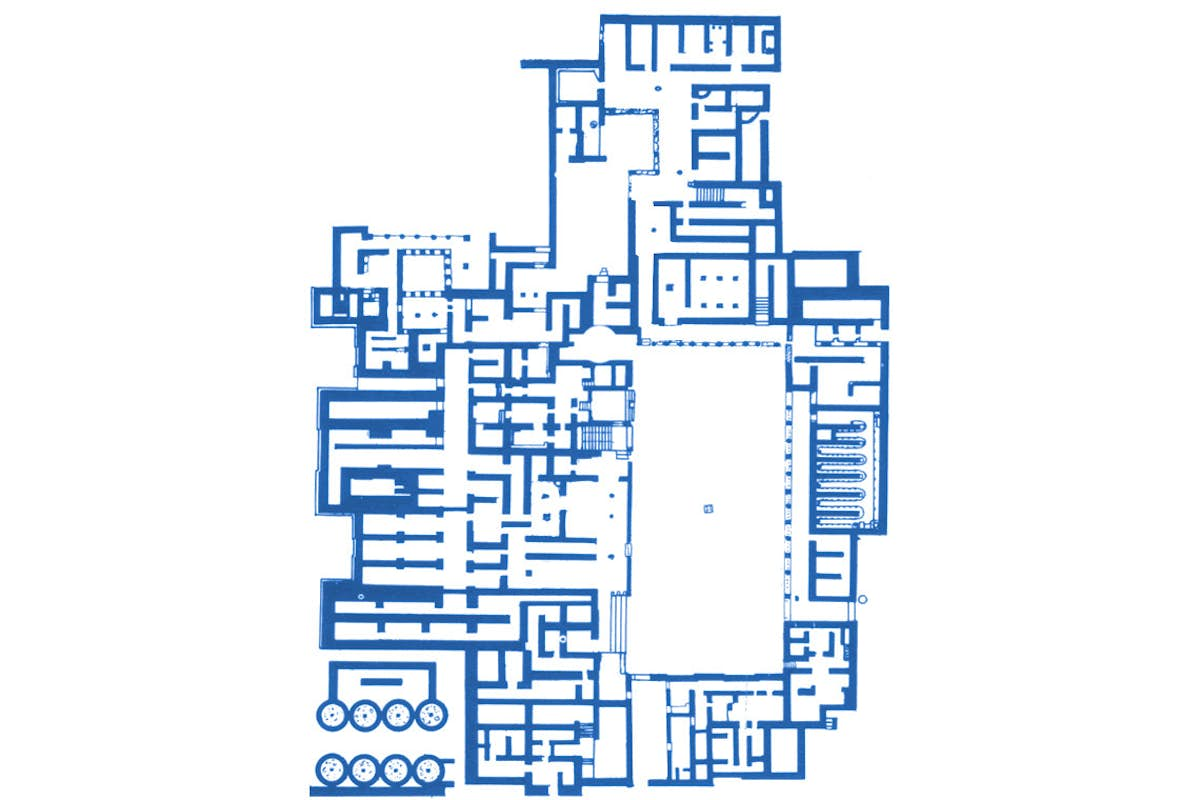ISOLATION
«Isoler
rendre comme une île, séparer de tous les côtés. Il faut isoler les grands monuments pour que l'ordonnance en soit appréciée. (…) « Si l'agriculture et le commerce dépérissent, les villes dépériront ; leur prospérité et leur force ne s'isolent point », Guizot, Hist. de la civil. 8e leçon. »
Littré, Emile, “Dictionnaire de la langue française”, 1863 (extract)
“I don't expect you, to understand / After you caused so much pain / But then again, you're not to blame / You're just a human, a victim of the insane”
Lennon, John, “Isolation”, John Lennon/Plastic Ono Band, 1970
In these times of sanitary confinement, I cannot help but remember a few places of magnificent isolation. Or are they magnificent places of isolation? Many of these I visited through fiction, leaving space for imagination and contradiction.
In Houellebecq’s « The Map and the Territory »1, the central character secludes himself in a large mansion in a forest. He pours a large asphalt square around it to keep the forest at a distance. Like a Matryoshka doll, the house, the asphalt and the forest form a layered isolation. Decades later, when he leaves his hermitage, the world is still the same, but it is also different. Or maybe the long self-inflicted confinement modified his perception of things.
In “Une vie à coucher dehors”2, Tesson depicts the encounter of two lighthouse keepers from the two extremes of the Euro-Asian continent. Vladivostok meets Brest. A wild storm locks them up in an “Enfer” (“hell” in French, meaning a lighthouse at sea). They convert the lantern room into a Russian Banya (steam bath). Again, the layered encapsulation.
How not to think also of Stephen King’s “The Shining”3, to which Kubrick4 adds a hedge maze for the finale of the movie. The mountains, the snow storm, the hotel, the labyrinth.
Speaking of mazes, Daedalus’ work for King Minos in Knossos is one of the mythological origins of western architecture. The Minotaur isolated in his maze, safely embedded in a palace built on an island.
Maybe isolation is what architecture is all about: isolation from the cold, from the heat, from the dangers, from dirt, from wind and rain and snow, from others as well, and from disease probably also. It is a process of distinction, of distancing. According to Littré, isolating is conferring the qualities of an island by separating from all sides. But then, at the same time, architecture is always placed in the world, in a context. Architecture engages isolation as a means to create the distance, which is necessary to observe and appreciate the world.
The palaces of the Minoan civilization in Crete developed from what was little more than granaries. Architecture, this is no news, had tight bounds with agriculture and with the ground from which it emerged. Which means that architecture also used to root its occupants in the world it seeks to separate them from.
Architecture as an oxymoronic contraction of separation and integration. A construction made to sacralise and to profanate at the same time5. Agriculture, production and construction may once have closed the circle assimilating humans with their environment. The humusation of the dead bodies nourished a substrate from which materials where extracted.
Today, the animals and vegetables we eat are bred in factories in which no sun or ground is allowed. The goods we use are produced in conditions we prefer to ignore and are sold in sterile environments. The materials with which we construct proceed from limited, a standardized and ubiquitous catalogue6. Incessant travel completes the disconnection. Architects travel across the world giving shape to aluminum curtain walls and plasterboard interiors. Architecture, once an isolating device in its anthropological and spatial function, becomes an ontological isolator between humankind and reality through the modalities of its production.
The cause of today’s pandemic is a combination of mass deforestation, factory farming and incessant travel7. Ironically, the physical isolation we now experience being secluded in our houses is the direct consequence of the veiled isolation of the human race from the world. Both a cause and a remedy to the situation8, architecture probably has a role to play.
Notions such as necessity and criticality are to be engaged, if architecture is to mean something. Necessity as a lens to question the opportunities and the modalities of architecture. Criticality as the open-minded interrogation of this necessity and of the automatisms that surround us.
A first step would be to question the countless labels with which architecture is qualified today, and the equal amount of tools that are supposed to quantify and regulate them. Zero energy, circularity, low-tech, cradle-to-cradle, low-carbon, reduce, reuse, recycle, flexibility, eco-sourcing. Labels may be useful, but they are by nature insufficient and problematic, were it only because of their advertising nature.
It is intrinsically impossible to propose a way of making architecture able to solve the equation. Any recipe, when applied systematically, will always provoke an imbalance. However, the certainty of failure should not lead to unbearable inaction. Reading Camus, revolt would be the only coherent architectural attitude: the permanent confrontation with its contradictions9.
1. Houllebecq, Michel, « La Carte et le Territoire », Flammarion, 2010
2. Tesson, Sylvain, « Une vie à coucher dehors », Gallimard, 2009
3. King, Stephen, « The Shining », Doubleday, 1977
4. Kubrick, Stanley, « The Shining » (movie), 1980
5. Agamben, Giorgio, « Profanazioni», Nottetempo, 2005
6. Watts, Jonathan, “Concrete: the most destructive material on Earth”, The Guardian, 25-02-2019
7. Spinney, Laura, « Is factory farming to blame for coronavirus?”, The Observer, 28-03-2020
8. On the “Pharmakon”, see also Derrida, Jacques, « La Pharmacie de Platon », Tel Quel, 1968
9. Camus, Albert, “Le Mythe de Sisyphe”, Gallimard, 1942
Harold Fallon / Ir Architect, Founding partner - AgwA
